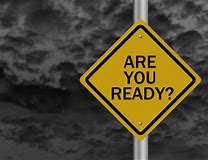Preparations for your lifts and escalators in the event of cyclones, storms and floods
Before a cyclone or flooding
- As a cyclone approaches it is not unusual for power disruptions or power outages due to transmission line damage. Transmission line damage don’t necessarily have to be in your local area to affect your equipment with power surges and spikes – the problems can be hundreds of kilometres away.
- Please advise all users of your lift equipment that the equipment should not be used before a cyclone or flooding. Be proactive and turn the equipment to fire service inside the lift car. Do not park the lift at the bottom level. Park the lift(s) at an intermediate floor preferably in the upper part of the building to minimise possible damage due to flooding or water build up in the lift(s) pit. Do not turn off at the mains. This can cause more problems after the event.
- If your lift shaft is subject to water entry either via a vent at the top of the lift shaft or around the landing doors if the lift entrances are open to the weather, it would be advisable to park the lift(s) (preferably with the doors closed) at the top of the shaft(s) to minimise potential damage. If there is no levels where the lift is not exposed to the weather – only in this situation is it best to turn off the lift at the mains and manually pull the doors closed
- Autowalks and escalators should be shut down and in low areas subject to flooding we recommend taking actions to help to prevent water ingress to the equipment.
During a cyclone or flooding
- During a cyclone, our service staff may be legally prohibited from going outdoors. Additionally we consider the safety of our staff paramount so it is probable that we will not be able to respond to a request for service, regardless if someone is trapped in a lift.
- During this time, if emergency service is necessary you may have to call State Emergency Services for assistance.
- Park your equipment in a safe position and turn the lift to fire service early. The later you leave it, the more potential you have of people being trapped and / or equipment damage.
- And most importantly, do not use your lifts until the cyclone has passed.
After a cyclone or flooding
- Please remember that our ability to provide immediate response after a severe cyclone may be affected due to the extent of damage to local property, flooding and power outages etc.
- If you believe your lift equipment is dry and unaffected by the storm then you may choose to return it to normal operation. If you suspect that there may be some damage or a chance of water penetration then you should contact our office and request a service inspection to check for any obvious issues that would prevent the equipment from going back safely into service.
- If you suspect your equipment has sustained water damage do not switch on, especially autowalks and escalators.
- Please remember that our own resources and ability to provide service may be affected and delays may be experienced. We will always endeavour to provide you with the fastest response to your service needs.
- If your lift equipment does sustain obvious damage by the cyclone, please notify us as soon as practical so that we can plan our resources and activities accordingly.
You should notify your insurers as soon as possible.
This article was contributed by Ben Nixon, KONE.


Leave a Reply
It’s interesting to know that the lifts should not be parked at a lower level of a facility to prevent damage that can be caused by flooding. I can imagine how to lift service equipment would be expensive to buy, so the owners should definitely follow precautionary measures for every risk. It will save them from having repairs or even getting replacements in the future. https://www.fortelifts.com.au/maintenance